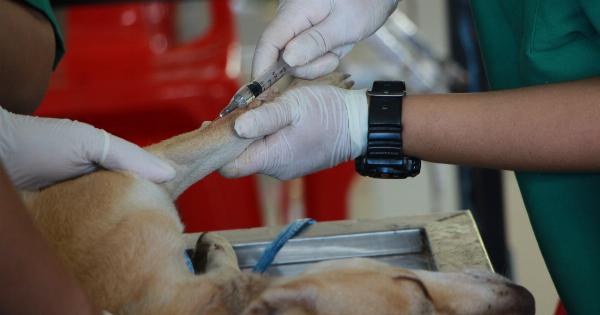Deafness is a condition that can affect dogs just like humans. It can be present at birth or acquired later in life due to various factors such as age, injury, or illness.
While it may seem challenging to communicate with a deaf dog, it is entirely possible with the right techniques and training.
Signs of Deafness in Dogs
Before you can effectively communicate with your deaf dog, it is important to recognize the signs of deafness. Some common indicators include:.
- Unresponsiveness to sounds or commands
- Startling easily when touched unexpectedly
- Failure to wake up when sleeping
- Lack of reaction to the doorbell or telephone
- Excessive barking or vocalization
If you observe any of these signs, it is crucial to consult with a veterinarian to confirm the diagnosis and rule out any underlying medical conditions.
Establishing Visual Communication
Since verbal commands and sounds may not be effective, visual cues become essential in communicating with a deaf dog. Here are some effective ways to establish visual communication:.
1. Hand Signals
By teaching your dog specific hand signals for various commands, you can effectively communicate your expectations.
For example, use a flat hand facing upward to signal “sit” and a sweeping motion of your hand downward to signal “lie down”. Consistency is key in ensuring your dog understands and recognizes these signals.
2. Flashlight Communication
In low-light situations or at night, using a flashlight to communicate with your deaf dog can be very helpful. Simply turning the flashlight on and off, or waving it in specific patterns, can convey messages.
For instance, turning the flashlight on and off quickly can indicate the command of “come”.
Creating a Vibrant Environment
Although dogs rely heavily on their sense of hearing, they have many other senses that can be utilized for communication. Making use of these senses can greatly enhance your ability to communicate with your deaf dog:.
1. Visual Cues
Dogs are highly observant creatures, so making use of visual cues in your environment can assist in conveying messages. For example, if you want your dog to go outside, you can stand near the door and point towards it.
2. Vibrations and Floor Sensors
Dogs are extremely sensitive to vibrations, so utilize this sense by communicating through the floor. For instance, stomping your foot on the ground can indicate a call for attention, or a vibrating floor sensor can be used to signal feeding time.
Positive Reinforcement Training
Training a deaf dog requires patience, consistency, and positive reinforcement. Here are some tips to make the training process successful:.
1. Treat-Based Rewards
Using treats as rewards is an effective way to reinforce desired behaviors. Pair these treats with hand signals for commands to establish a strong association.
2. Clicker Training
A clicker can be a useful tool in training a deaf dog. Pair the sound of a clicking noise with treats to mark desired behaviors. Over time, your dog will learn to associate the click with positive outcomes.
Safety Measures for Deaf Dogs
When communicating with a deaf dog, it is important to ensure their safety. Here are some precautions to take:.
1. Use a Leash
Whenever you are in public or unfamiliar environments, keep your deaf dog on a leash to prevent them from potentially dangerous situations. A leash also enables you to gently guide and redirect their attention when necessary.
2. Visual Identification
Consider adding visual identification to your dog’s collar, such as a tag or bandana, that indicates their deafness. This informs others about your dog’s condition, allowing for better understanding and interaction.
Patience and Understanding
Learning to communicate with a deaf dog requires time, patience, and understanding. Remember that each dog is unique, and what works for one may not work for another.
Be open to experimenting with different techniques and always reward your dog’s progress and efforts.






























